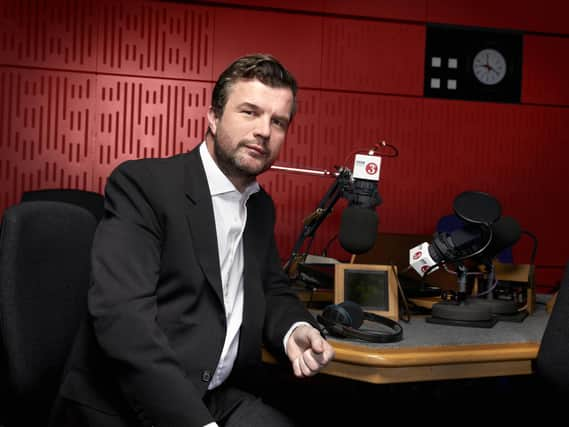Petroc Trelawny: Why I'm taking Radio 3 Breakfast on a tour of Yorkshire's rivers


It’s a good hour of hard walking from the layby on the B6259 to the source of the River Ure, high on Abbotside Common in Upper Wensleydale. Skylarks rise up into the sky and the calls of curlews cut through the silence.
Outcrops of stone surround the spot where water bubbles up from peat bog. The first drops glisten in the sunlight, and soon form a stream that will steadily grow in width, volume and confidence as the river makes its journey first south, and then east. I pick up a small stick resting on top of the richly coloured moss, and toss it into the youthful waterway, idly wondering if it will survive a journey under dozens of bridges and through multiple villages, towns and cities before passing Spurn Point and meeting the North Sea.
Advertisement
Hide AdAdvertisement
Hide AdTracing a river is one of the best ways of getting to know the geography and history of a place, and next week I’m taking my Radio 3 Breakfast programme along the Ure and Ouse, and out into the Humber Estuary.
We start at Aysgarth Falls in Wensleydale, visiting the ruins of Jervaulx Abbey and the Georgian splendour of Newby Hall near Ripon. Ten miles later at Linton-on-Ouse, the river changes its name, and sets off for York, where we will call at the Minster and Bishopthorpe Palace with its riverside gardens.
We finish the week on the tip of Spurn, that delicate spit of land cutting halfway across the mouth of the Humber, where military emplacements once protected Hull and the estuary and the RNLI maintains its only lifeboat station with a full-time crew.
Rivers can evoke powerful feelings - as a Cornishman every time I cross the Tamar my heart lifts a little, safe in the knowledge that I am home. Aire, Calder, Derwent, Don, Esk, Nidd, Ribble, Rother, Spen and Swale; spoken out loud the names of Yorkshire’s rivers become a poem of praise to the historic county.
Advertisement
Hide AdAdvertisement
Hide AdThe valleys that the rivers create define the landscape, so to do the bridges that cross them, projects that have long demanded clever solutions from engineers and architects.
The route out of North Yorkshire on the Tees Transporter Bridge, the railway viaducts at Ribblehead and Larpool and the Humber suspension bridge are all celebrated Yorkshire landmarks, each given listed status by English Heritage. Other river crossings recall earlier history – Piercebridge for example, where the Romans built a permanent crossing as early as the 3rd century.
The new bridge linking the County Durham side of the Tees with Cliffe in North Yorkshire was built in the early 16th Century and was the site of a battle between Parliamentarians and Royalists in 1642. Rivers enabled Yorkshire to grow as a great trading region.
In his fascinating book Yorkshire – A Lyrical History of England’s Greatest County, Richard Morris delights in the fact that Selby was once an international port, despite being fifty miles inland from the North Sea.
Advertisement
Hide AdAdvertisement
Hide AdHe quotes statistics from the York Herald - on one day in 1828 Selby had fourteen arrivals and 37 sailings. Goole, ten miles south-east, saw 44 departures for destinations including Newcastle and ports in Essex, Kent, Germany and Scandinavia.
We will reflect on the economic, social and geographical history of Yorkshire’s rivers as we travel the 129 miles of the combined Ure and Ouse and journey on into the Humber towards the sea.
Each morning local musicians will reflect riverside communities, from Bob Ellis on the dance tunes of Wensleydale to the group Spare Hands with traditional songs of the Humber. There will be plenty of space to celebrate Yorkshire composers including the 18th century son of Spofforth, John Hebden, the great Halifax born choral master George Dyson, and the contemporary musician Gavin Bryars, born by the Ouse in Goole.
And never far away will be the sound of the water itself, as it drops down fast flowing rapids, passes under echoing bridges and sustains the passage of assorted boats and barges. I hope you can join me for a different view of Yorkshire, as seen from the rivers that feed its heart.
Advertisement
Hide AdAdvertisement
Hide AdPetroc Trelawny presents A Yorkshire River Journey – live each morning next week on BBC Radio 3 from 6.30-9am
Support The Yorkshire Post and become a subscriber today. Your subscription will help us to continue to bring quality news to the people of Yorkshire. In return, you'll see fewer ads on site, get free access to our app and receive exclusive members-only offers. Click here to subscribe.